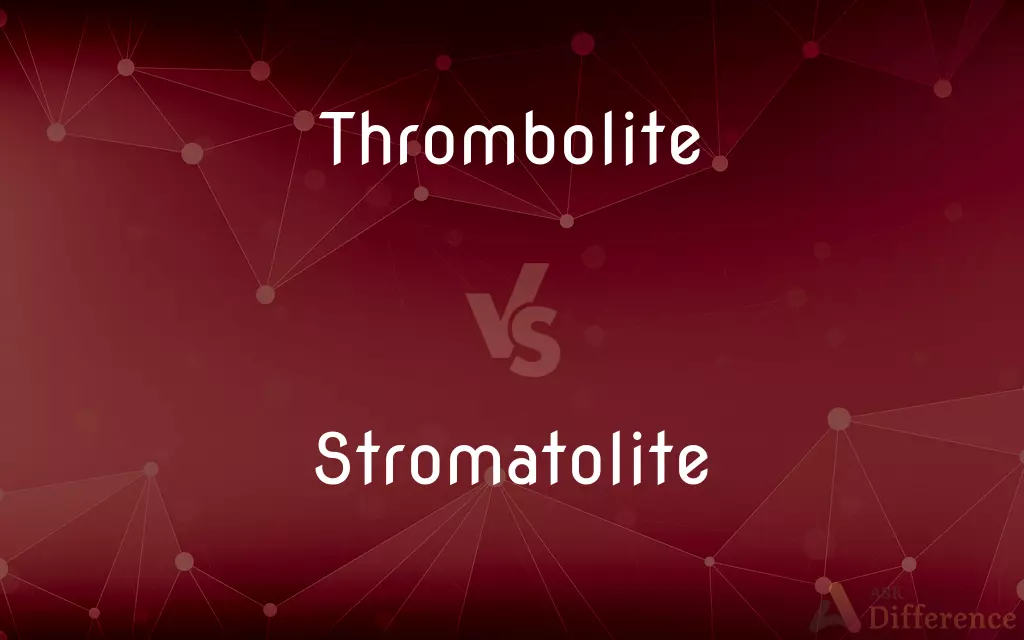Thrombolite vs. Stromatolite — What's the Difference?

Difference Between Thrombolite and Stromatolite
ADVERTISEMENT
Definitions
Thrombolite
Thrombolites (from Ancient Greek θρόμβος thrómbos meaning "clot" and λῐ́θος líthos meaning "stone") are clotted accretionary structures formed in shallow water by the trapping, binding, and cementation of sedimentary grains by biofilms of microorganisms, especially cyanobacteria.
Stromatolite
Stromatolites () or stromatoliths (from Ancient Greek στρῶμα (strôma), GEN στρώματος (strṓmatos) 'layer, stratum', and λίθος (líthos) 'rock') are layered sedimentary formations (microbialite) that are created mainly by photosynthetic microorganisms such as cyanobacteria, sulfate-reducing bacteria, and Pseudomonadota (formerly proteobacteria). These microorganisms produce adhesive compounds that cement sand and other rocky materials to form mineral "microbial mats".
Thrombolite
A form of stromatolite that has a clotted, rather than a laminated structure
Stromatolite
A usually rounded or columnar sedimentary structure consisting of alternating layers of carbonate or silicate sediment and fossilized microbial mats, produced over geologic time by the trapping, binding, or precipitating of minerals by groups of microorganisms, primarily cyanobacteria.
Stromatolite
(geology) A laminated, columnar, rock-like structure constituting a large share of all fossils from 3.5 to 0.5 billion years ago, with some still being formed at present, some or all of which result from the deposit of minerals by microorganisms such as cyanobacteria.
ADVERTISEMENT

















































